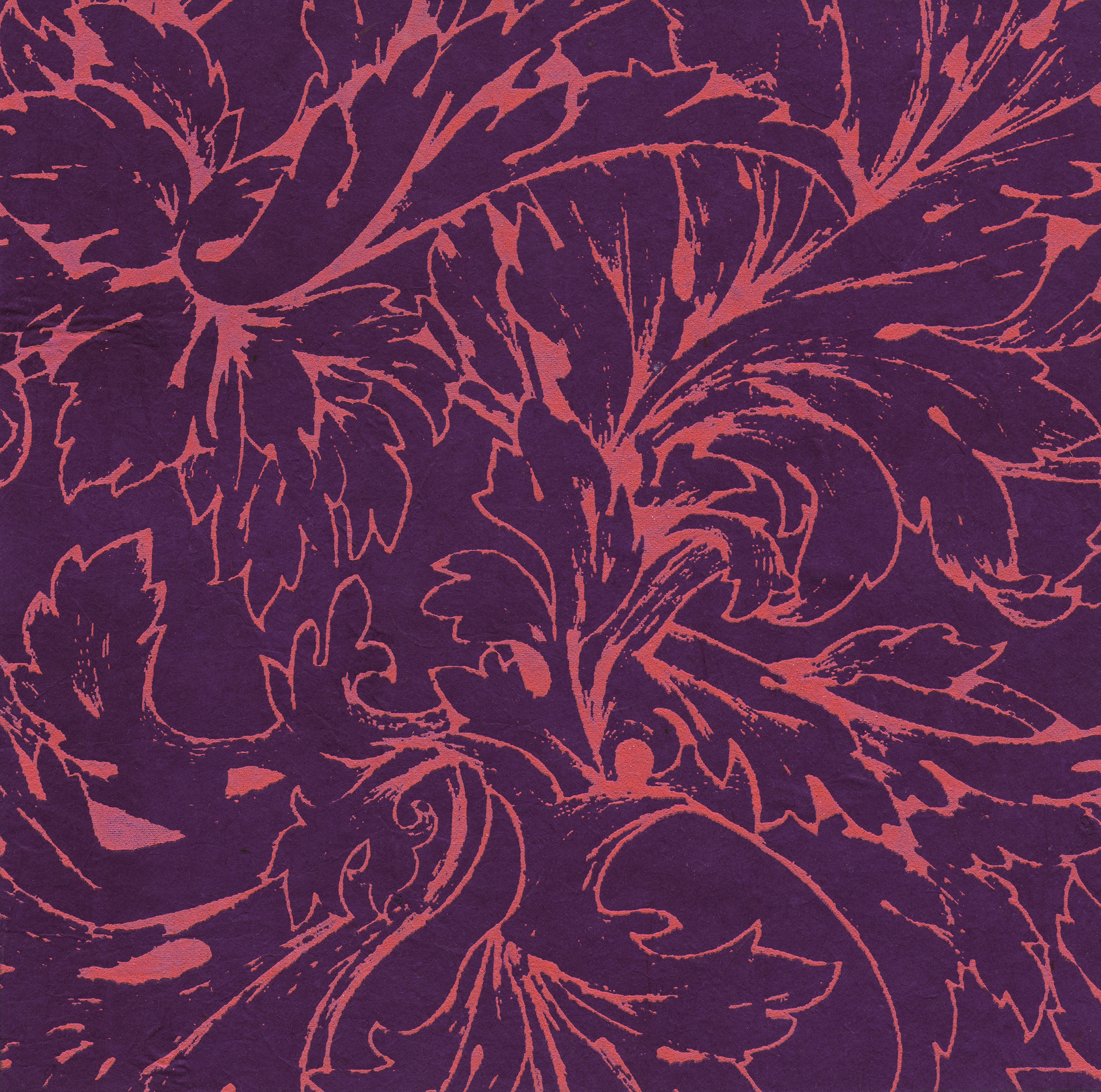Michael Robinson
Garlanded In Wistaria

Cover art is handmade paper from India
available on myriad additional platforms
Michael Robinson introducing Garlanded In Wistaria on dublab
You Are An Explorer (Vince Guarino)
Waves of Highs and Lows (Carla Crow)
1. Garlanded In Wistaria (55:14)
meruvina: electra piano, electric piano
Composed, Programmed and Mixed by Michael Robinson
Recorded and Mastered by Catharine Wood at Planetwood Studios
An idea for a new composition is something most cherished. Oftentimes an idea is sought upon finishing one composition and desiring to do another. Other times an idea may manifest unexpectedly, and then it is noted and referenced for attention some later time, perhaps. June 2019 was what now looking back seems close to a perfect visit to New York from Los Angeles. This included a three-hour radio interview on WKCR FM; a meeting related to my music at NYU; being a weekend houseguest of Lee Konitz; dinner with David Amram in Beacon, NY; interviewing Eliot Zigmund at his New Jersey home related to Bill Evans; visiting my college English professor, Therese Law, near West Point; driving out to East Hampton and Montauk Point; and savoring favorite museums and restaurants in Manhattan. It was at the Metropolitan Museum of Art that a musical idea of a particular tenderness came to me. Now, nearly two years after that aesthetic sensation, following the extroverted effusions of my previous album, Taffeta Patterns, the seemingly opposite introverted music becoming Garlanded In Wistaria beckoned. My overall oeuvre seems at times like one composition comprised of contrasting moments in time captured by music. First off, I began with descending minor chords played by a smoky, nebulous electric piano creating a pensive, transcendently contemplative rasa or feeling. While I use chords infrequently for my music, I love doing so when it happens, as in works like Delayed Response, Lahaina Lanterns, and the aforementioned Taffetta Patterns. Added to the chords is a through-composed melodic utterance portrayed by one of the earliest electric pianos, known as the Electra, with a timbre recalling the original twelve music boxes Karlheinz Stockhausen used for Zodiac, my favorite composition of his, and also the Persian santur. It was the sheer penetrating starkness of the Electra, used by myself for the first time here, that best differentiated and blended into the ambiguous lushness of the chords. Each of my composition's four chords, and the melodic movement corresponding to them, qualify as belonging to Asavari thaat (Aeolian mode), if with four different tonal centers for shadja (tonic). This was only apparent after analyzing my melodic responses to the chords, noticing I had done so intuitively. While I commonly make much use of wild fluctuation across the spatial spectrum of audibility, Garlanded in Wistaria called for a cessation of panning movement, accentuating the stillness of the rasa or mood, this perhaps reflecting wonderment for beautiful things in life, and sad bewilderment for the physical impermanence of existence. Garlanded in Wistaria is a nearly hour-long alap and ballad at once in Tantric form, my Indian classical music and jazz orientations coalescing into something different. Alap is the opening section of ragas, meaning touch a color, normally devoid of any steady beat, being tempo-less music. My use of an extremely slow pulse simultaneously relates to the remarkably slow tempos favored by Frank Sinatra and John Coltrane for their ballad interpretations. Intersections between Indian classical music and jazz manifest in unique ways, never designed, but rather flowing naturally from my personal assimilations of these titanic traditions that were the principle classical musics at the time of the world I was born into transcending national borders and intellectual and spiritual boundaries. My personal experience with extended music other than symphonic works and chamber music began with hearing Light My Fire by The Doors on FM radio as a young teenager, incredulous at how Ray Manzarek and Robby Krieger engaged in uninterrupted solos for extended lengths in-between Jim Morrison singing the lyrics. Next in line with extended music was my first hearing of My Favorite Things by the John Coltrane Quartet in the early seventies, this being the actual inspiration for Light My Fire, which came seven years later chronologically. In turn, String Quartet by Morton Feldman, performed by the Kronos Quartet in the early eighties, mesmerized me for its gentleness and extreme duration. So did the Thursday Afternoon album by Brian Eno, heard after moving to Manhattan in 1985. Perhaps most momentously of all was hearing a concert of North Indian classical vocal music at Washington Square Church in Greenwich Village in 1987. This night of music taught ways of composing music of significant length, dispelling imaginary restrictions of how long the time span of music might be, the only real limitations being our desire for what size sound canvas to paint upon, above all trusting one’s instinct for one note or phrase of the moment also preparing without consciously knowing for the next note or phrase, keeping focused on the prevailing rasa of the music and moment while remaining cognizant of the composition’s overall form and structure. Mostly moving in distilled, spare phrases, the Electra piano also visits glissandi and tremolos at moments of greatest intensity. Garlanded in Wistaria ends suddenly, as if waking from a reverie. My title, Garlanded in Wistaria, is from a poem by Ch-u Yuan (340-278 BC) translated by Ezra Pound (1885-1972), including his deliberate spelling of "wistaria." While reading this poem, the words of my title rose-up off the page, suggesting in poetry the subtle flavor of my musical feeling. I will get me to the wood - Michael Robinson, May 2021, Los Angeles
© 2021 Michael Robinson All rights reserved
|